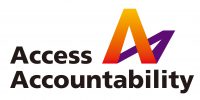Click here to see PART 1 of this series.
Now that we have already discussed using questionnaires as a relatively affordable form of data collection, it’s time look at the more challenging and time-consuming form of survey: interview.
Interviews
Interviews are a formal method of data collection, using either closed or open-ended questions, depending on the type of interview style chosen. The difference between an interview and a questionnaire is that interviews are an opportunity to ask more in-depth questions. Data gathered may be used on an academic level to prove a new theory in a field of study, or in advocacy or reporting work to support an issue or cause. Interviews may be carried out in several different ways:Phone Interviews
This type of interview requires interviewer training and a detailed script with step-by-step instructions. It is medium to high cost due to the possible need to buy phone numbers from phone companies. There will be no specific demographic due to the numbers being provided are random. But it can be focused on certain regions within the country where the sample is being taken.
Case Example: One example of this was a telephone survey conducted among a sample of 1,002 numbers, listed and unlisted, within New York (USA). The survey was run by Public Agenda, to explore compassion, concern, and conflicted feelings towards the homelessness and housing in New York.
It enabled the researchers to ask more complex, open-ended questions than would have been possible in a questionnaire, such as “How do you feel about…?” and “What is your family’s financial situation?”.Video Interviews
Video interviews work best when trying to get a sympathetic or emotional response, or to bring attention to particular issues. There are two types of video interviews, one done in a controlled environment tackling specific groups’ feelings towards an event. Video interviews might look for a physical response to questions being asked, or they may be conducted to provide physical documentation of oral accounts of events that took place.

Due to the sensitive nature of interviewees being recorded on video, this style of interviewing is often done long after an event takes place. One example would be victims of the holocaust or survivors of the killing fields in Cambodia. Click here. to see an example of one used for documentation purposes.
A different, less sensitive version is the street video interview. This is commonly used to gather general public opinion on a political, environmental, social, or demographic issue. This is also the easiest method of getting a broad demographic sample pool because does not exclude those without access to technology and is effective for sampling a cross-section of the population. One example, asked German people about their feelings towards Chancellor Angela Merkel and immigration, found by clicking here.In-person Interviews
In-person interviews require a long period of time for training, doing trials of the interviews, as well as essential monitoring during interviews and time afterwards to compile, categorize and interpret the data. Due to this, the amount of funding required for can be very large, especially if your organization must hire outside parties to help with different parts of the interview.Case Example: Transitional Justice Working Group (TJWG) has spent the past three years interviewing over 500 North Korean defectors. The primary objective was for the interviewees to locate geographical points or areas in response to questions being asked. They were asked where they resided before they escaped, their hometown, any noteworthy buildings or places, permanent residences, as well as if they know of execution or body sites in the areas they resided. This data may be used in future criminal investigations regarding crimes against humanity committed in North Korea.

Last Updated: April 28, 2018
Author: Haley Joy Herbig
